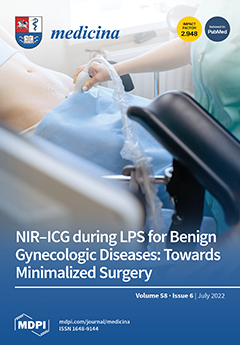Background and Objectives: Early allograft dysfunction (EAD) is considered a surrogate marker for adverse post-liver transplant (LT) outcomes. With the increasing use of nonconventional donors, EAD has become a more frequent occurrence. Given this background, we aimed to assess the prevalence and impact of EAD in an updated cohort inclusive of both conventional and nonconventional liver allografts.
Materials and Methods: Perioperative and one-year outcomes were assessed for a total of 611 LT recipients with and without EAD from Mayo Clinic Arizona. EAD was defined as the presence of one or more of the following: bilirubin > 10 mg/dL on day 7, INR > 1.6 on day 7, or ALT and/or AST > 2000 IU/L within the first 7 days of LT.
Results: Within this cohort, 31.8% of grafts (
n = 194) came from donation after circulatory death (DCD) donors, 17.7% (
n = 108) were nationally shared, 16.4% (
n = 100) were allocated as post-cross clamp, and 8.7% contained moderate steatosis. EAD was observed in 52.2% (
n = 321) of grafts in the study cohort (79% in DCD grafts and 40% in DBD grafts). EAD grafts had higher donor risk index (DRI) scores (1.9 vs. 1.6,
p < 0.0001), were more likely to come from DCD donors (48% vs. 13.8%,
p < 0.0001), were regionally allocated (
p = 0.003), and had higher cold ischemia times (median 6.0 vs. 5.5 h,
p = 0.001). Primary nonfunction events were rare in both groups (1.3% vs. 0.3%,
p = 0.22). Post-LT acute kidney injury occurred at a similar frequency in recipients with and without EAD (43.6% vs. 30.3%,
p = 0.41), and there were no differences in ICU (median 2 vs. 1 day,
p = 0.60) or hospital (6 vs. 5 days,
p = 0.24) length of stay. For DCD grafts, the rate of ischemic cholangiopathy was similar in the two groups (14.9% EAD vs. 17.5% no EAD,
p = 0.69). One-year patient survival for grafts with and without EAD was 96.0% and 94.1% (HR 1.2, 95% CI 0.7–1.8;
p = 0.54); one-year graft survival was 92.5% and 92.1% (HR 1.0, 95% CI 0.7–1.5;
p = 0.88).
Conclusions: In this cohort, EAD occurred in 52% of grafts. The occurrence of EAD, however, did not portend inferior outcomes. Compared to those without EAD, recipients with EAD had similar post-operative outcomes, as well as one-year patient and graft survival. EAD should be managed supportively and should not be viewed as a deterrent to utilization of non-ideal grafts.
Full article






